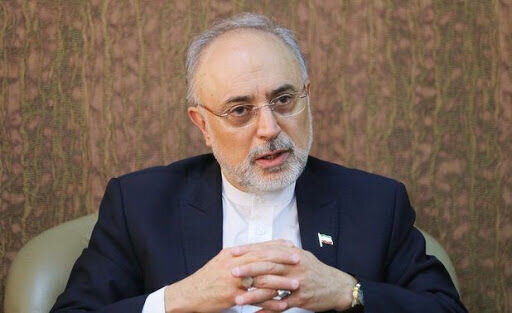Nuclear chief says 60% uranium is used for radiopharmaceuticals

Speaking to ISNA, Ali Akbar Salehi said, “We do not want to use 60% enriched uranium as fuel for the Tehran reactor. We want to produce U3O8 (uranium oxide, or yellowcake) targets, which needs uranium with 60% purity. Thus, we produce targets, using 60% uranium.”
He went on to explain about the procedure of producing various types of radiopharmaceuticals, which is the main purpose of enriching uranium to up to 60%, stating, “These targets will be placed in the Tehran reactor. After being exposed to atomic radiation for some time, a substance called molybdenum is produced, which we must separate to remove the molybdenum. This molybdenum is the raw material for the manufacture and production of many radiopharmaceuticals.”
Iran used to import a significant amount of molybdenum from abroad, Salehi said.
He also said the decision to enrich uranium to the level of 60 percent is entirely within the framework of the JCPOA, which is referred to as molar fusion (molybdenum resulting from nuclear fission).
“We have been researching this process for a long time and will use 20% targets for testing in the next week or two, but the further we go, the higher the richness, because the higher the richness, the higher the efficiency and quality of our products in a shorter duration,” explained Salehi, a nuclear physicist.
He also confirmed that a number of the centrifuges at the Natanz nuclear site were damaged. However, he ruled out rumors about the extent of the damage uttered by some foreign media outlets.
Sabotage attack on the Natanz nuclear facility on April 11 disrupted the electricity grid.
Salehi added, “We have made the preparations for implementation of 60% (enrichment), and the enrichment in Natanz has not stopped… Only one of our halls is defective, and as soon as possible and within the next two days, the main power supply will be connected, and the process of replacing the damaged centrifuges will be started accurately and quickly.”
On the decision by the AEOI to install an additional 1,000 centrifuges at the Natanz site, Salehi said, “This action is in line with Iran's steps to reduce its JCPOA obligations and in accordance to Articles 26 and 36 of the JCPOA.”
The law on Strategic Action for Lifting Sanctions was passed by the parliament in December 2020. Since then, Iran has reduced its compliance with the JCPOA.
According to the text of the law on Strategic Action for Lifting Sanctions , "The (Atomic Energy) organization (of Iran) is also obliged to fully meet the country's need for peaceful uses of uranium enriched above 20% without delay."
At his cabinet meeting on Wednesday, President Rouhani said that Iran was supposed to start enriching 60% uranium in twenty days, or a month, yet Israel's sabotage act at Natanz nuclear plant accelerated the process.
Source: Tehran Times

